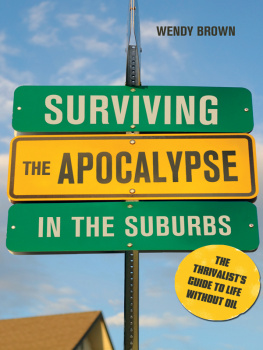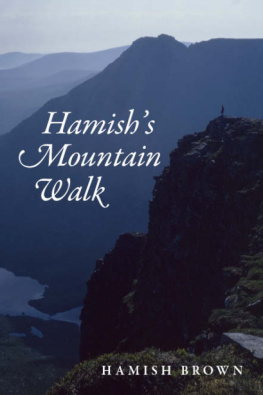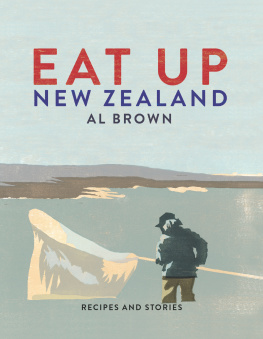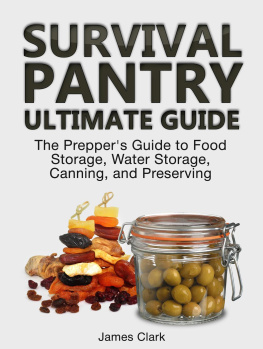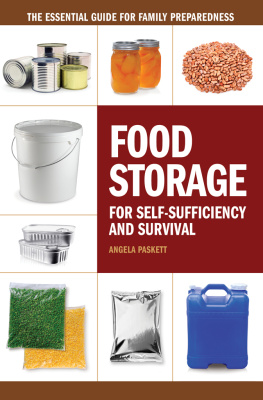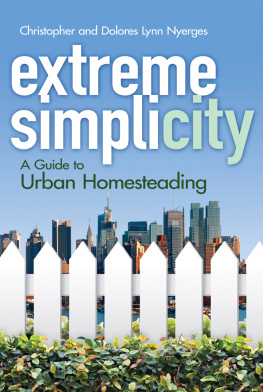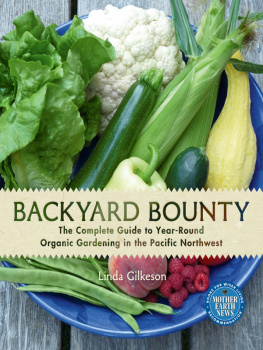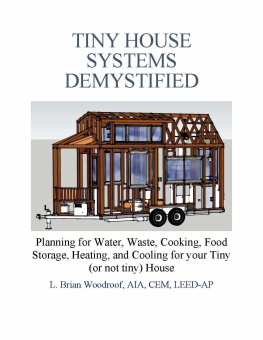After shelter, the second most important item in a survival scenario is water.
Water.
The human body is 97 percent water. We can only live a few days without it. It helps us keep cool and stay warm; drinking lots of it helps to purge toxins from our bodies. Water is also an essential element in our homes. It keeps things clean, and in some heating systems, it keeps the house warm. It is the elixir of life, and any preparedness plan that does not account for water is doomed to fail.
For most of my life, my water has come from a municipal water supply. When I was living in the suburbs in eastern Alabama, we would occasionally have drought conditions, and our water usage would be restricted by mandate. Certain activities would be outlawed like watering lawns and washing cars.
Generally, these days, my family limits these activities by choice, because we feel water conservation is important. I currently live in a very wet area (50% of the year, theres some form of precipitation rain or snow); water rationing and drought have never been an issue since I moved here more than a decade ago. But we are on city water, and while it has never happened, yet (knock on wood), the potential for us to lose access to potable water is there.
The water company that supplies my water gets it from a nearby river using huge pumps to suck the water up into the treatment facility. From there, it is pumped through a network of over 200 miles of pipes that snake underground around the neighboring communities to get to my home. It costs, in 2010 figures, about $750,000 in electricity per year to deliver 8 billion gallons of water, about $1 for every 10,000 gallons. For reference, 202 gallons of water equals 1 cubic yard. We use about 54 gallons of water per day in our house, which costs about $16 per month or 50 per day.
Currently, 40 percent of the electricity that is used in my house is derived from hydro power, but that leaves 60 percent. Twenty-five percent of our electricity comes from natural gas. The other roughly 30 percent is from fossil fuels, coal and natural gas.
Having lived for many years in a coal mining community, Ive actually had the opportunity to see a coal mine in action. All modern mining operations are heavily dependent on machinery to assist in the extraction process. Men are needed to operate the machines, but the machines are powered by fossil fuels. In addition, once the coal is pulled from the ground, its loaded onto huge dump trucks, which transport it to the rail yards. Trains take the coal to power plants (or to ships for transportation to power plants) and then the coal is burned to produce the electricity that makes my CFL bulbs glow and powers my computer. Men fought and died to make the coal mines safer places to work and to force coal mine owners to provide a fair wage, but even the most conscientious owners can not make the mines completely safe. Its difficult, dirty and dangerous work, even with the machines, but without them, it would be worse.
The problem is that its all related. Oil is used in the coal mines to get the coal that gives us electricity. Electricity powers the pumps that feed the water through the pipes that allow me to have this life elixir flow unheeded, on demand from my tap. If non-renewable resources are no longer available for electricity generation, the water that flows so freely out of the several taps in my house may stop.
I have thought about what we would do in that case. There is a small brook behind my house, where, in a pinch, we could get water. A mile in any direction brings me to a source of fresh water (and by fresh I mean not salty) that I could carry home, filter and boil to drink. In addition, I live about two miles from the ocean, and using a distillation/desalination process, I could make the ocean water drinkable.
Both of my parents grew up on rural homesteads during the late 40s, 50s and early 60s. They remember living without electricity, central heating/cooling, television and indoor plumbing.
Recently I asked my mother if she could only keep one modern convenience, which would it be, and without hesitation, she said, Indoor plumbing.
I agree.
In the 1990s, when I was teaching in a rural community in northern Kentucky, I didnt have running water in my house for the first several weeks. I had to borrow buckets of water from the neighbors for washing and cooking. Carrying five-gallon buckets of water across the road is not much fun. As such, I know that depending on any one of the remote sources of water I have available to me now is not my best option. I would not have lasted the winter if Id had to drag water across the road in a snowstorm, and walking two miles up the road to the creek.... Not the best long-term solution.
Luckily, we have several options available. Some of them are very complicated, and can be quite costly, but since were talking about a life-preserving element, it is worth considering spending the time and money to secure.
The first (and simplest and cheapest) option is a rain barrel. In drought-prone areas, in fact, a rain barrel should be considered a necessity. We currently have two 55-gallon rain barrels that are set up to catch water as it drips (in our very wet climate, cascades might be a more appropriate word) off the roof. We do not have our barrels hooked up to an elaborate gutter system, because we do not have rain gutters on our roof. The reason is very complicated and has to do with the pitch (or lack thereof ) of our roof and the likelihood of ice dams forming during the winter, which creates the perfect opportunity for us to have a water catchment system inside the house, but ruins the insulation in the ceilings (i.e., ice dams cause water from the melting snow to pool on the flat part of our roof, and as we all know, water wants to go somewhere, usually finding its way inside the house, which is very much not a good thing).
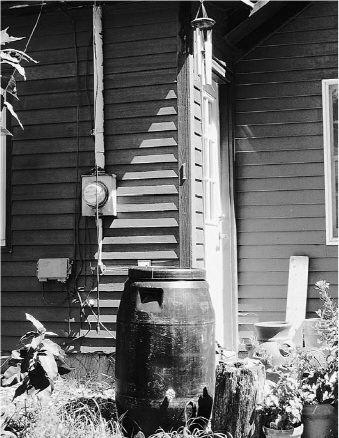
Our rain barrels fill rather quickly and easily and are a good source of water for our gardens and our animals. We can get about eight months of use out of our rain barrels, using them every day for the gardens and the animals (we do not have to water the gardens very often, but we do have to provide fresh water for the animals, and when raising broilers during the summer, we go through a lot of water). In a pinch, we could use the water in the rain barrels (after we filtered and boiled it, of course) for drinking, cooking and bathing.
For long-term use, however, our rain barrel set-up would not be my first choice, first because wed need to haul water into the house using buckets, which, as I already mentioned, is not the best choice. Also, in our area, the temperatures drop below freezing every night during late fall and early spring; once winter gets a good foothold, daytime temperatures stay below freezing too until the spring thaw. Frozen rain barrels do not provide water for household use.
A dug or driven well with a manual pump would be my first choice. Several neighbors have wells, but they rely on electric pumps to bring the water up from the ground and into their houses. If I were to go through the trouble of digging a well, I would want to be assured that, no matter what, Id have access to my water. We lose power with enough regularity that I can not be completely confident we would have water if I depended on an electric pump.
A dug or driven well may not be the best choice for everyone, however, and rain barrels are actually illegal in some places. While this is changing, it might not change quickly enough for the survival-minded suburbanite to be prepared. An option similar to the rain barrel, but not quite so obvious, would be a cistern.
Next page
